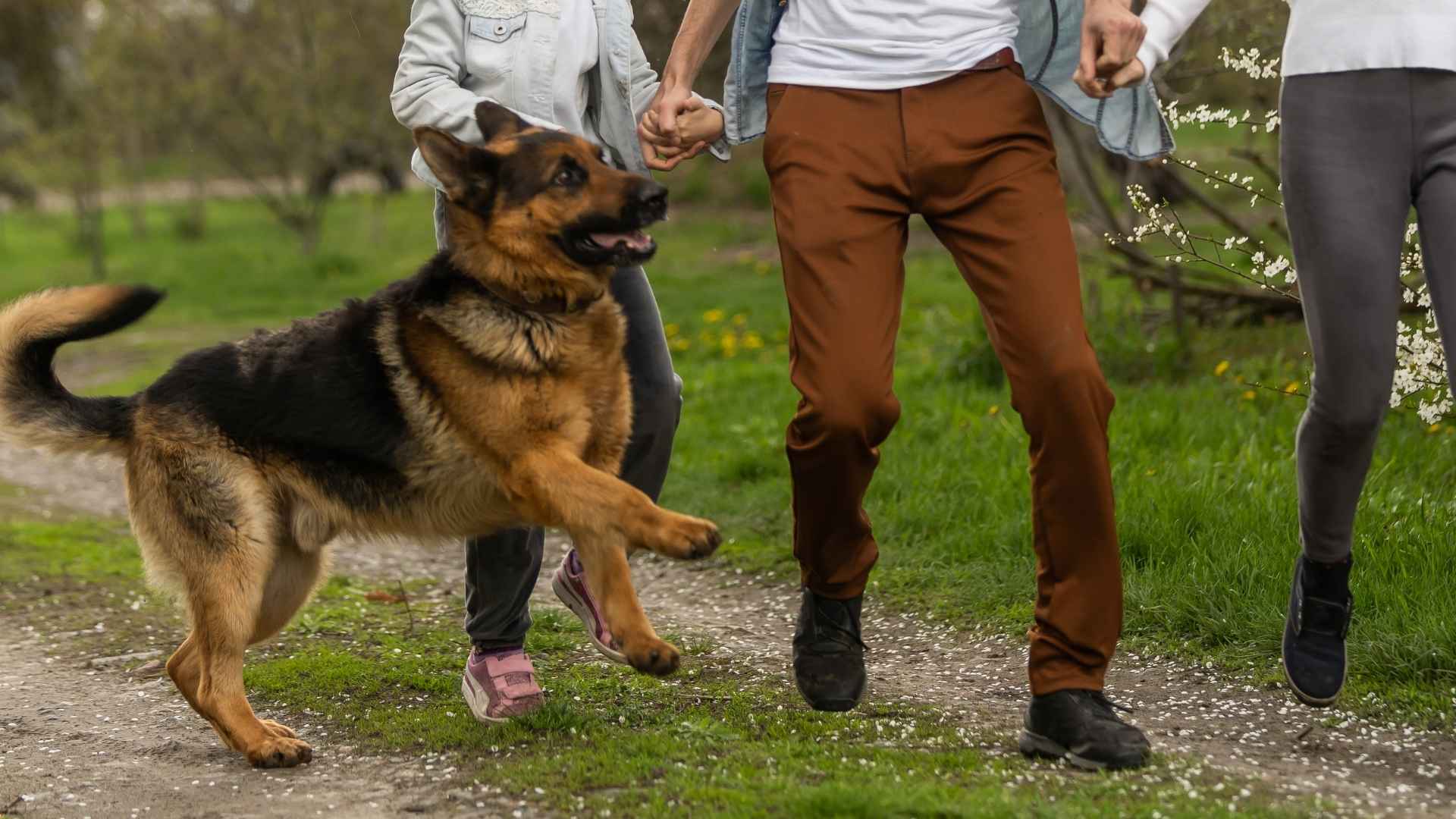When it comes to safeguarding your loved ones and your home, few companions are as reliable as a well-trained guard dog. These loyal protectors are more than just pets — they are steadfast guardians, ready to stand watch and respond when needed. Choosing the right breed can make all the difference, blending affection with the instinct to protect.
The most effective guard dogs share a mix of qualities: loyalty, alertness, and intelligence. They are naturally observant, quick to respond, and often large and fearless enough to deter threats. Yet, their value goes beyond security — they offer companionship, affection, and a deep bond with the family they protect.
From breeds renowned for their courage to those praised for their trainability, certain dogs are born with the instincts to guard. These canine defenders not only bring peace of mind but also enrich family life with their devotion and character. In this article, we explore the ideal guard dog breeds for family defense, balancing strength with heart.
Ideal Guard Dog Breeds For Family Defense
1. Giant Schnauzer
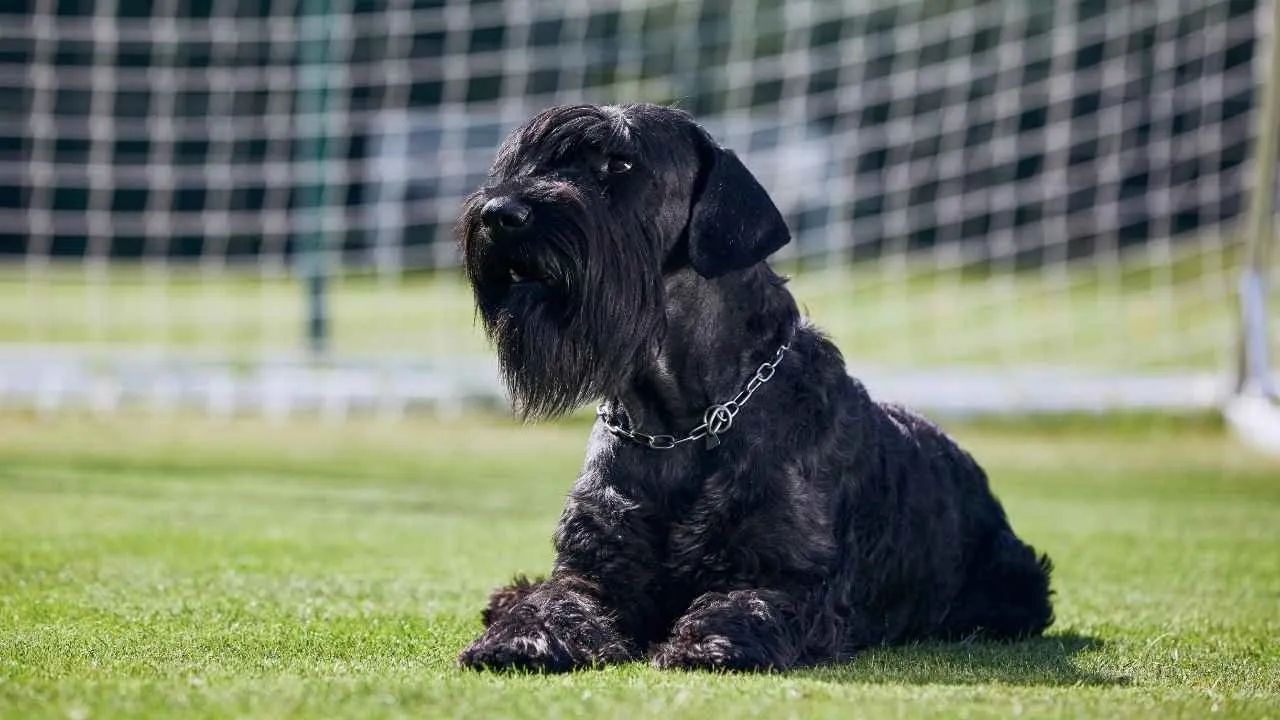
The Giant Schnauzer, also known as the Riesenschnauzer, is the largest of the Schnauzer family, originally developed in Germany to drive cattle and guard breweries, farms, and homes. Standing 23.5–27.5 inches tall and weighing 55–85 pounds, this bold, muscular dog combines impressive strength with keen intelligence.
Its dense, wiry double coat, bushy eyebrows, and trademark beard give it a distinguished appearance — but also require consistent grooming. AKC says that their double coat is either solid black or pepper and salt.
With a life expectancy of 12–15 years, the Giant Schnauzer belongs to the Working Group and thrives when given both a purpose and space to roam.
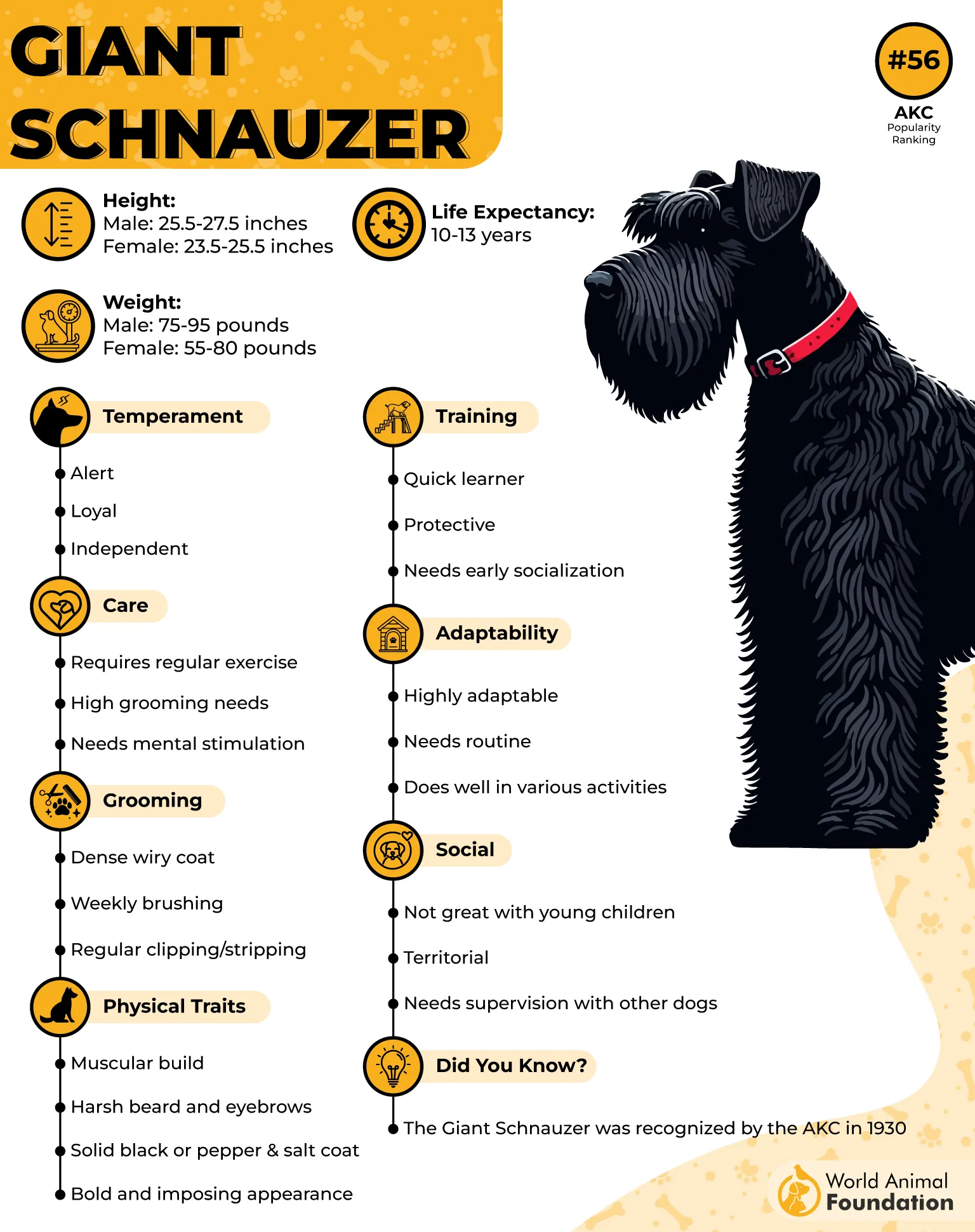
Training
Bred as a working guard, the Giant Schnauzer is naturally protective, highly intelligent, and eager to please, making it very trainable. However, its strong will and high energy demand an experienced hand. Early socialization is essential to help them distinguish between genuine threats and everyday encounters.
Consistent obedience work, paired with positive reinforcement, helps channel their guarding instincts into reliable, controlled behavior. Mental stimulation — such as agility, scent work, or herding — keeps them engaged and prevents boredom-related mischief. Daily vigorous exercise is non-negotiable; without it, they may become restless and stubborn.
Fun Fact: Historically, these excellent guard dogs weren’t just guardians — they also worked as carting dogs, pulling loads through rural towns and farms.
2. Boxer
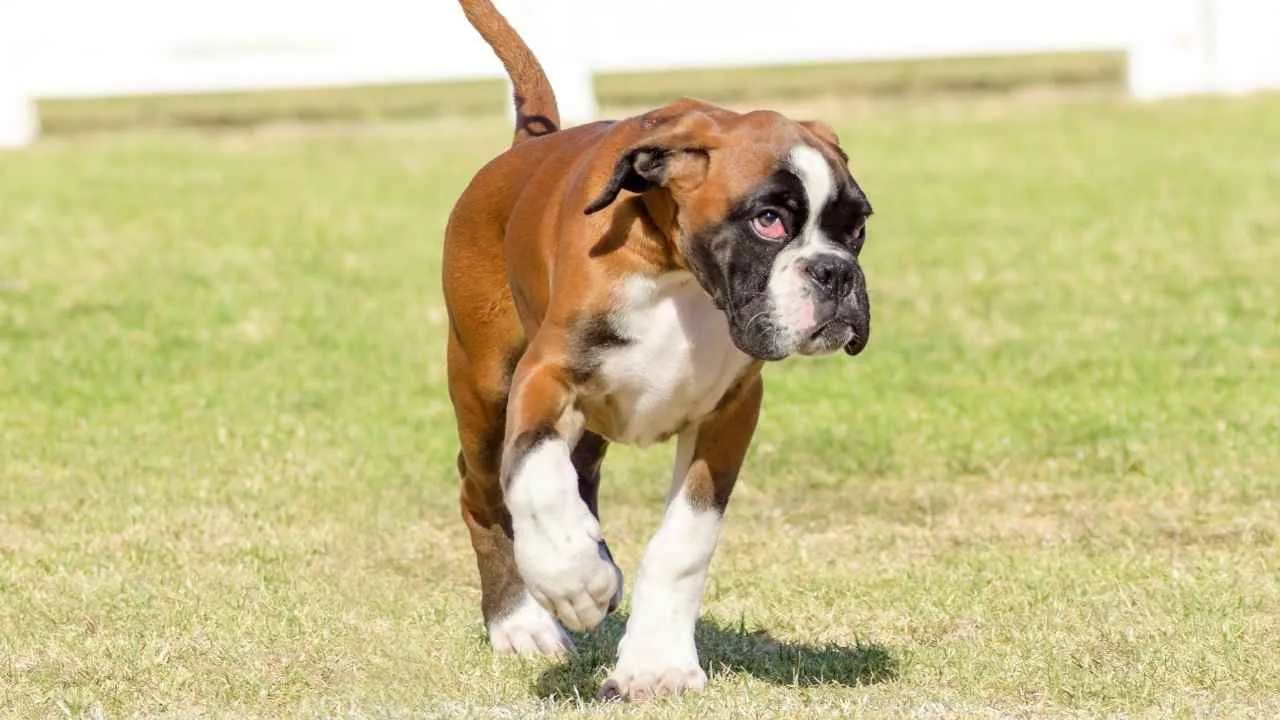
The Boxer, also known simply as “Boxer,” is a medium-sized, athletic breed that originated in Germany in the late 19th century, developed from the Bullenbeisser and English Bulldog.
Standing between 21.5 and 25 inches tall and weighing 50 to 80 pounds, these family-friendly guard dogs are members of the Working Group and typically live 10 to 12 years.
Their strong, square build, short muzzle, and expressive dark eyes give them a distinctive look, while their sleek, short coat—seen in fawn, brindle, or white with possible markings—makes grooming minimal.
Known for their boundless energy and affectionate nature, Boxers are both family-friendly and naturally protective, making them excellent companions and guardians. PetMD says their energetic and lively nature often makes Boxers well-suited for active households.
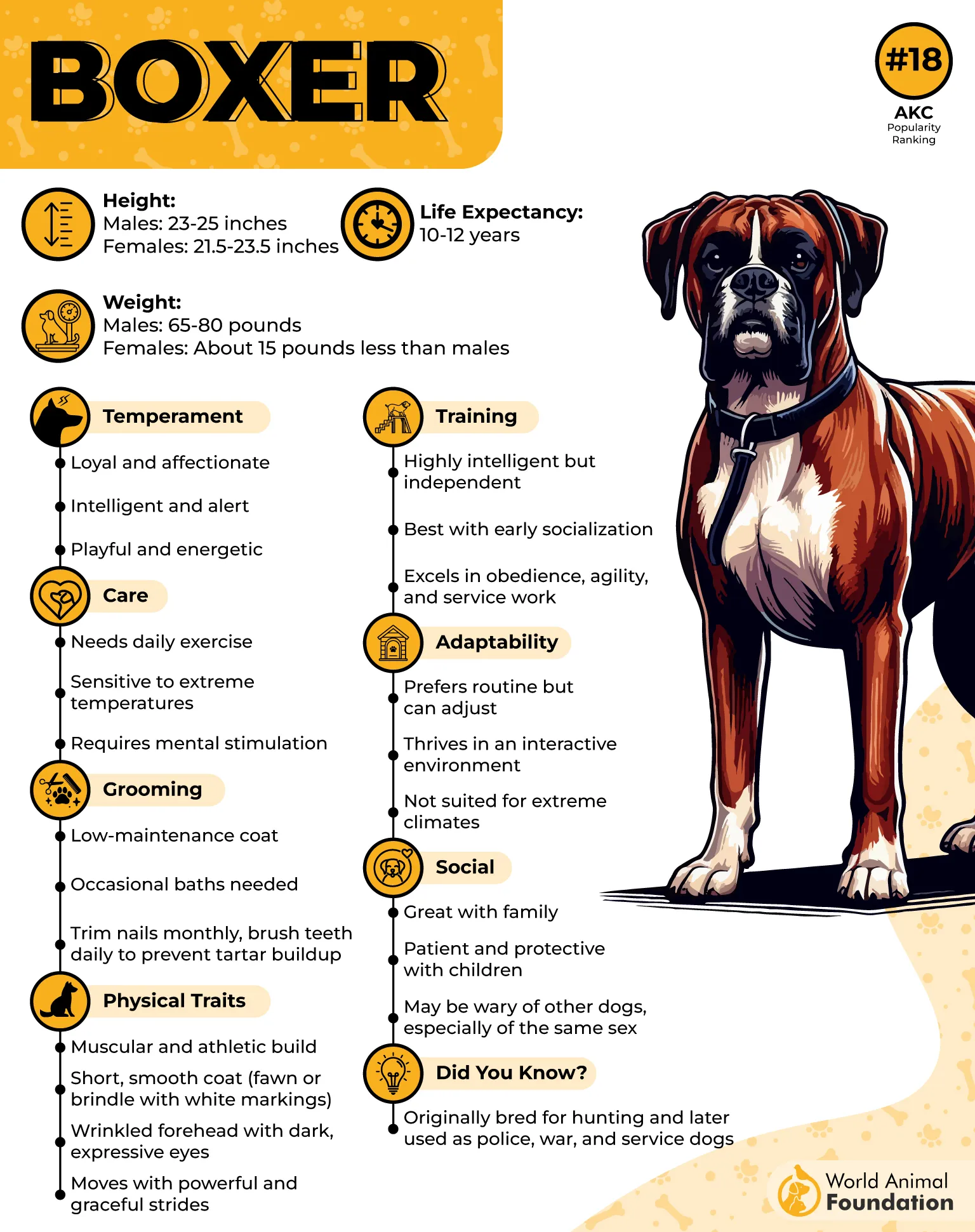
Training
These loving family pets are intelligent, adaptable, and quick to learn, but their spirited temperament calls for consistent, engaging training from an early age. Positive reinforcement with treats, praise, and play works best, as they thrive on attention and enjoy the learning process.
Early socialization helps them balance their protective instincts with good manners, especially around children and visitors. Owners should be prepared to address their tendency to jump up—a habit that can be managed through persistent training.
Regular mental stimulation, paired with 30 minutes to two hours of daily exercise, ensures they stay well-behaved and happy. Boxers also excel in canine sports like agility and rally, making training both practical and fun.
Fun Fact: The breed’s name is believed to come from their playful habit of standing on their hind legs and “boxing” with their front paws when interacting.
3. Belgian Tervuren
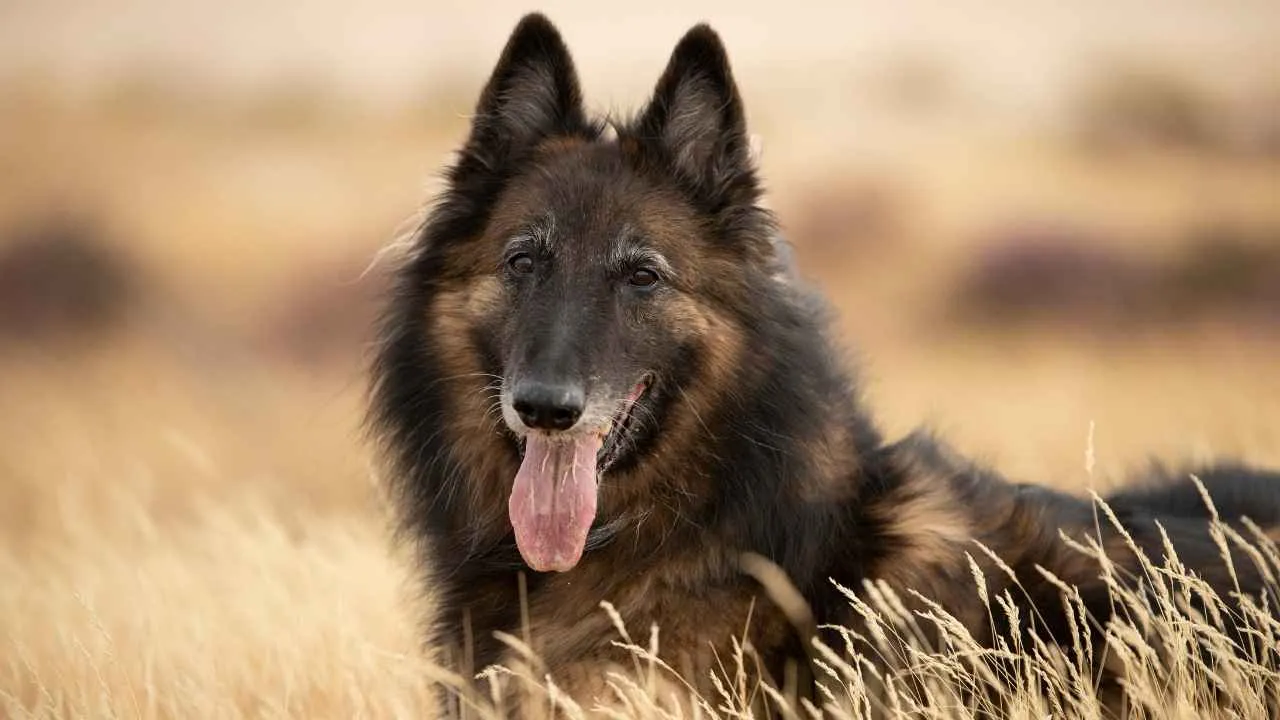
The Belgian Tervuren, also known simply as the “Terv,” is a striking and agile member of the Belgian Shepherd family. Originating from the town of Tervuren in Belgium, this medium-to-large herding breed was developed in the early 20th century for guarding and livestock work.
Males typically stand 24–26 inches tall and weigh 55–75 pounds, while females reach 22–24 inches and weigh 45–60 pounds. Their distinctive double coat—long, dense, and beautifully feathered—comes in rich fawn to mahogany shades with a black overlay and trademark black facial mask.
Known for their elegance, high energy, and unwavering devotion, Tervurens excel as both protectors and affectionate companions. WebMD says they are very protective of their owners but may take time to warm up to strangers. With a lifespan of 12–14 years, they are classified in the Herding Group and are prized for their intelligence and versatility.
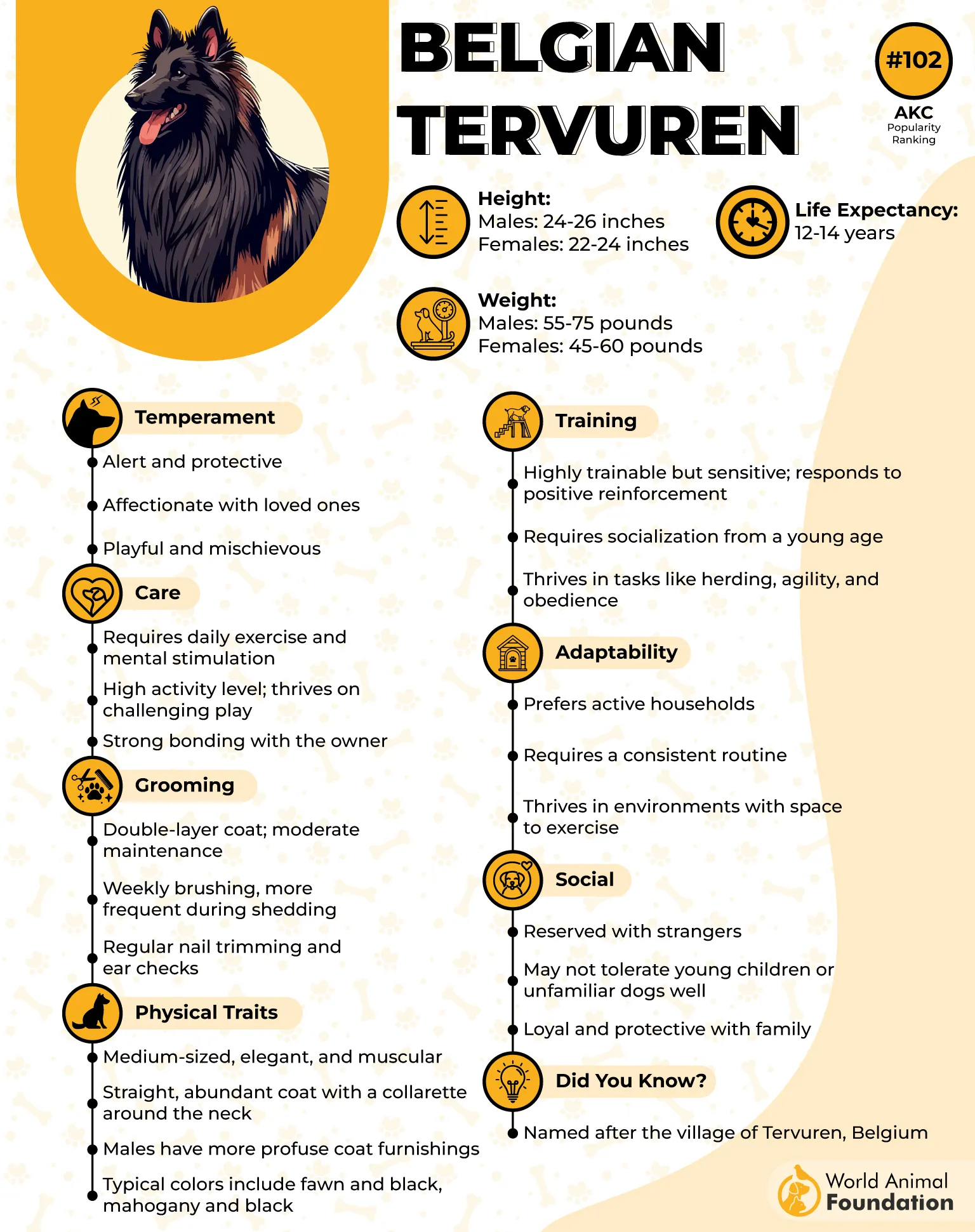
Training
Highly intelligent and eager to please, the Belgian Tervuren responds exceptionally well to positive reinforcement and play-based methods. Early training is crucial to managing their protective instincts and channeling their energy productively.
Because they are naturally alert and reserved with strangers, socialization from puppyhood helps them become confident and well-mannered in diverse situations.
Tervurens thrive when given structured activities such as obedience or herding trials, which keep their minds sharp and bodies active. Consistent expectations, combined with mental and physical challenges, will bring out the best in this capable working dog.
Fun Fact: The Belgian Tervuren has served as a guide dog, search-and-rescue worker, and even a wartime courier, showcasing its adaptability and dedication to duty.
4. Akita
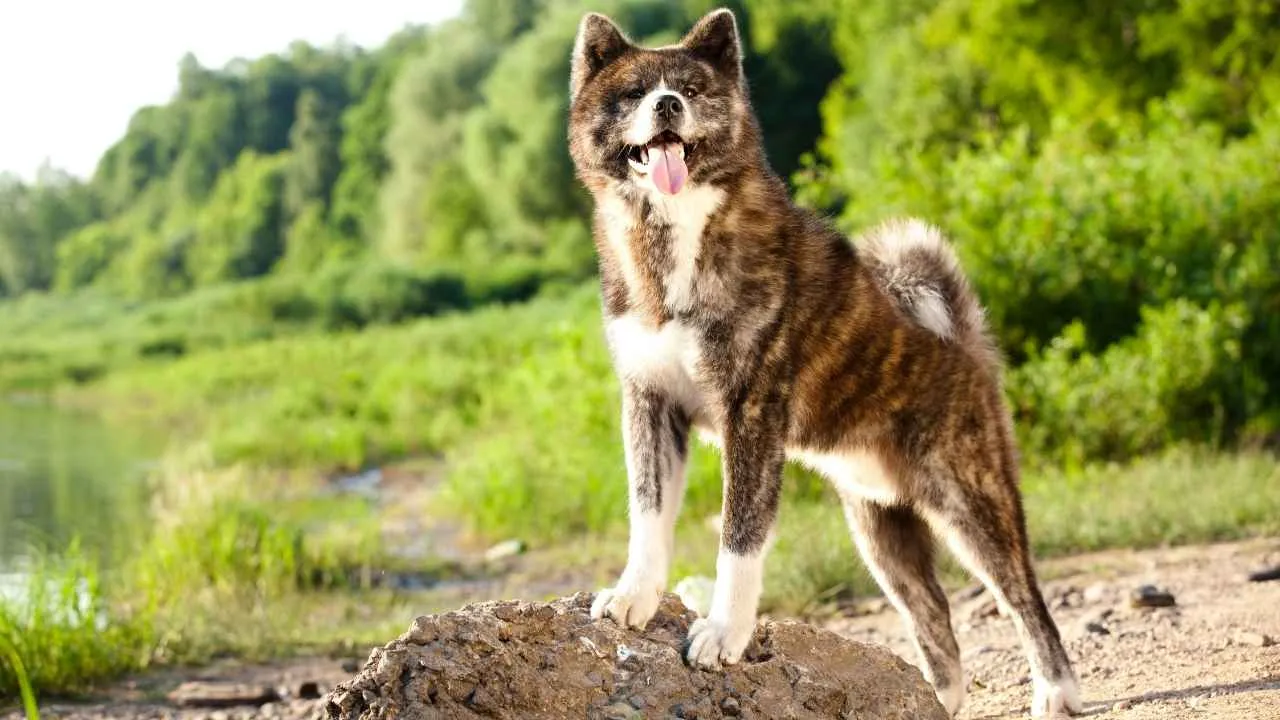
The Akita, also called the “Japanese Akita” or “Akita Inu,” is a dignified, muscular breed from Japan, historically revered as a guardian of royalty and a symbol of health and longevity. Originating in the rugged Akita Prefecture, these dogs were bred for hunting large game and guarding property.
Classified in the Working Group, males typically stand 26–28 inches tall and weigh 100–130 pounds, while females reach 24–26 inches and weigh 70–100 pounds. They sport a thick double coat in colors like red, fawn, black, and brindle, paired with a curled tail and upright triangular ears.
With a life span of 10–13 years, they are known for their loyalty, courage, and quiet vigilance — often investigating disturbances silently, barking only when something is truly amiss.
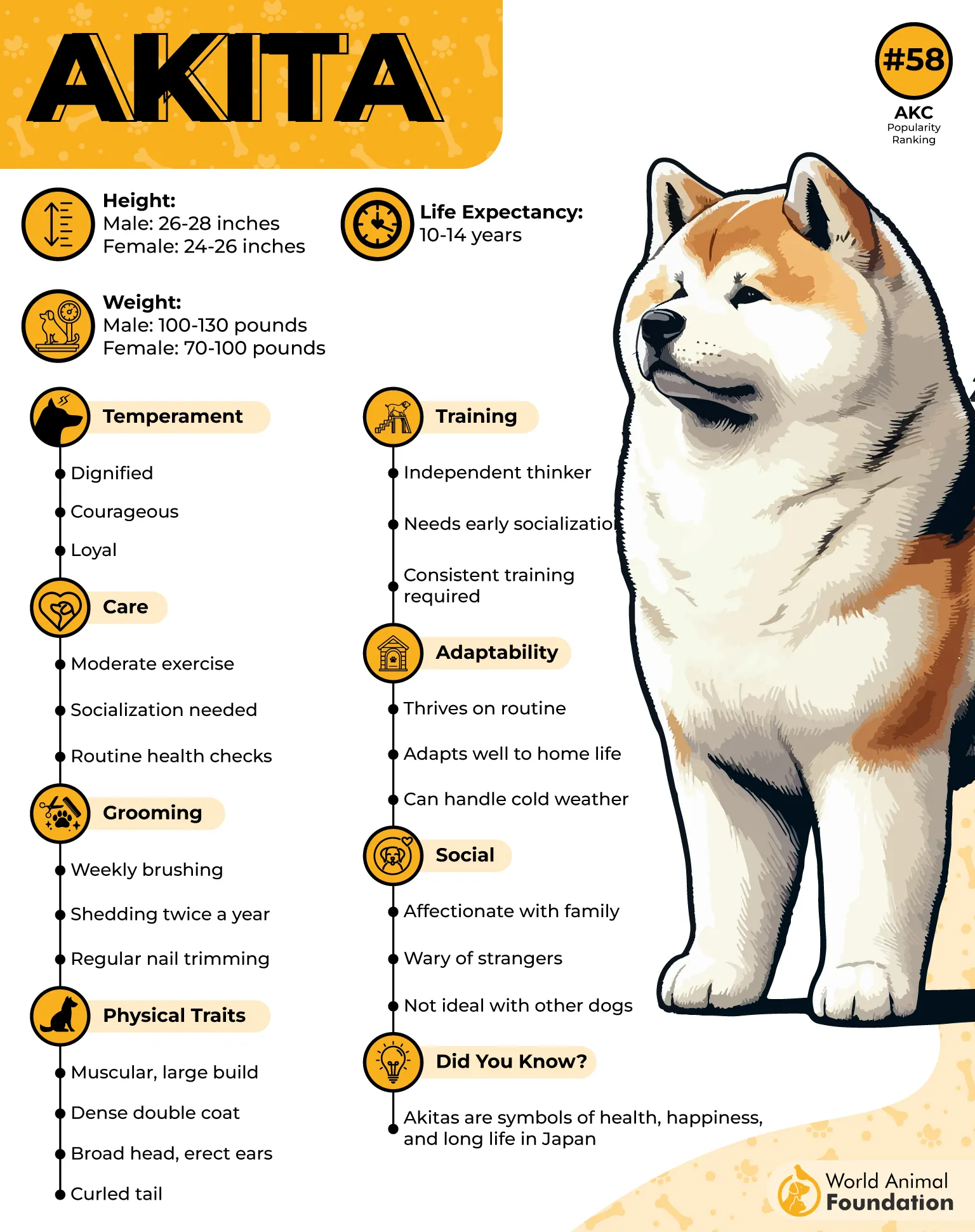
Training
Akitas are intelligent yet independent, making early and consistent training essential. They require a confident, experienced owner who can establish boundaries and reinforce commands with positive praise.
Early socialization helps prevent undue aloofness or aggression toward strangers and ensures they remain well-mannered protectors. Introducing them to varied people, pets, and environments from puppyhood encourages balanced behavior.
Because of their strong guarding instincts, ongoing training throughout their life is crucial to keep them responsive and under control.
Fun Fact: In Japan, it’s customary to gift an Akita statue when a child is born, symbolizing health, happiness, and a long life.
5. Weimaraner
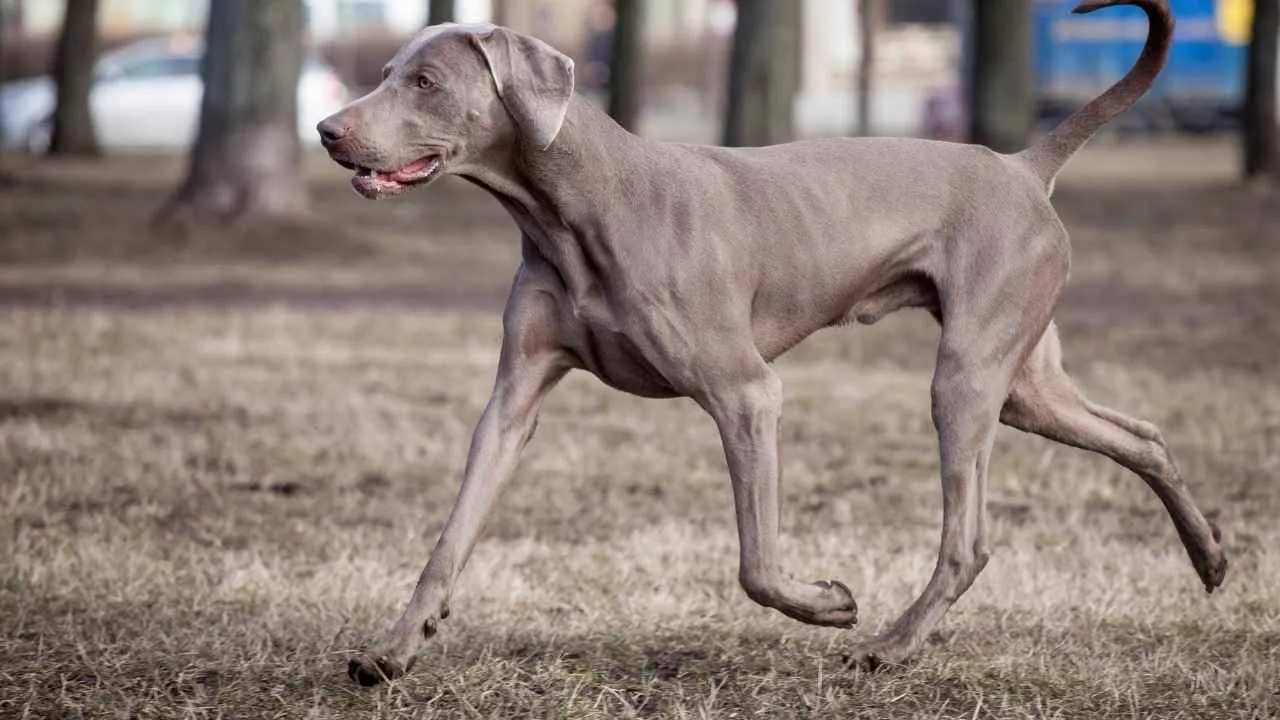
Also known as the “Silver Ghost,” the Weimaraner is a striking breed originally developed in early 19th-century Germany as a hunting companion for noblemen. Its regal silver-gray coat, amber or blue-gray eyes, and athletic build make it instantly recognizable.
Standing about 23 to 27 inches tall and weighing between 55 and 90 pounds, this sporting group member is lean, powerful, and built for endurance. With a lifespan of 10 to 13 years, the Weimaraner thrives in active households where both its body and mind are kept busy.
Originally prized for tracking and retrieving game, this energetic dog still retains strong hunting instincts, which contribute to its watchful and protective nature.
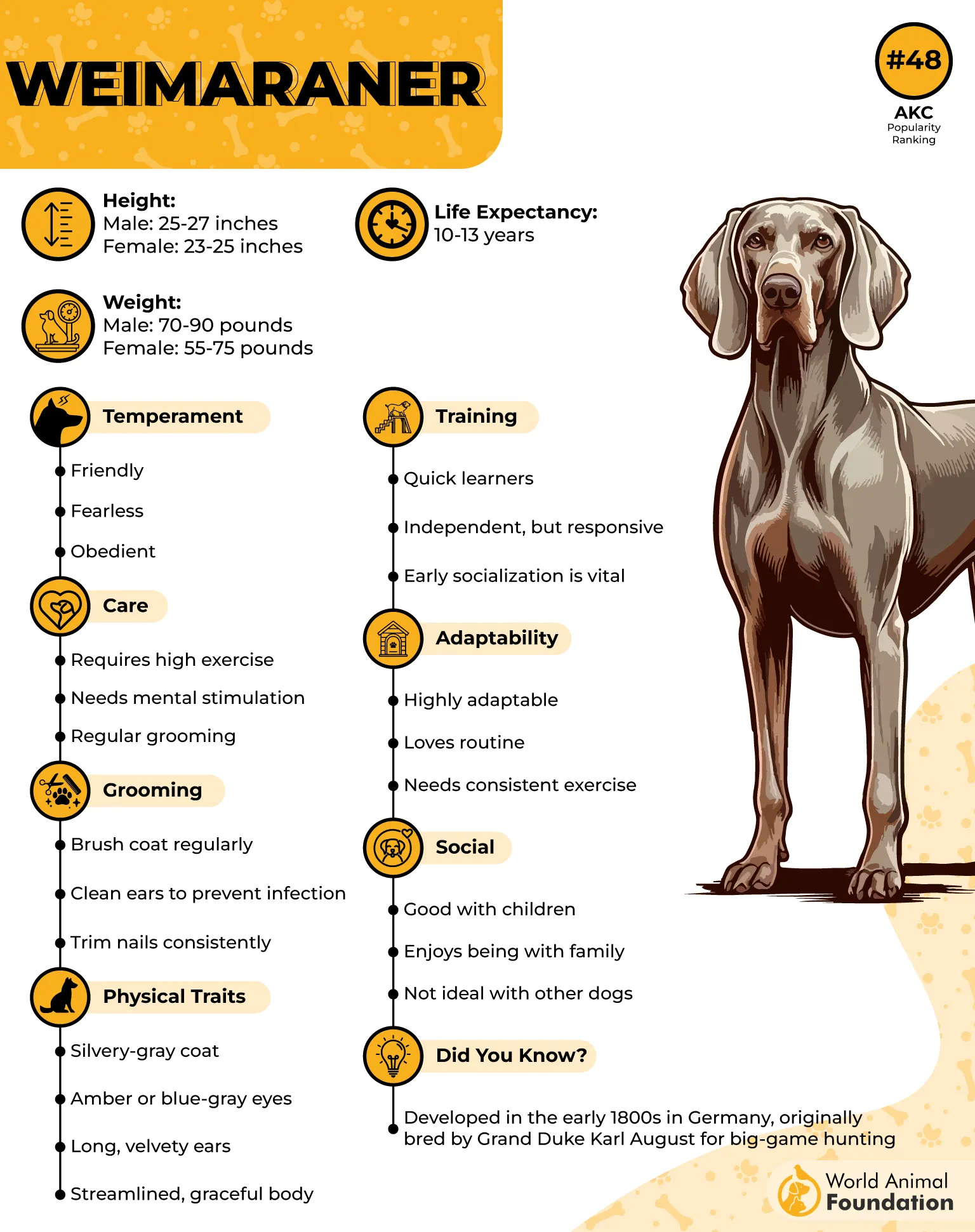
Training
Weimaraners are intelligent, eager to please, and quick learners, making them responsive to positive reinforcement obedience training. However, their strong-willed nature means they benefit most from firm yet positive reinforcement methods.
Early socialization is essential to temper their natural prey drive and ensure they interact well with other dogs and people. They excel in obedience, agility, and tracking sports, and regular mental stimulation helps prevent destructive behaviors born from boredom.
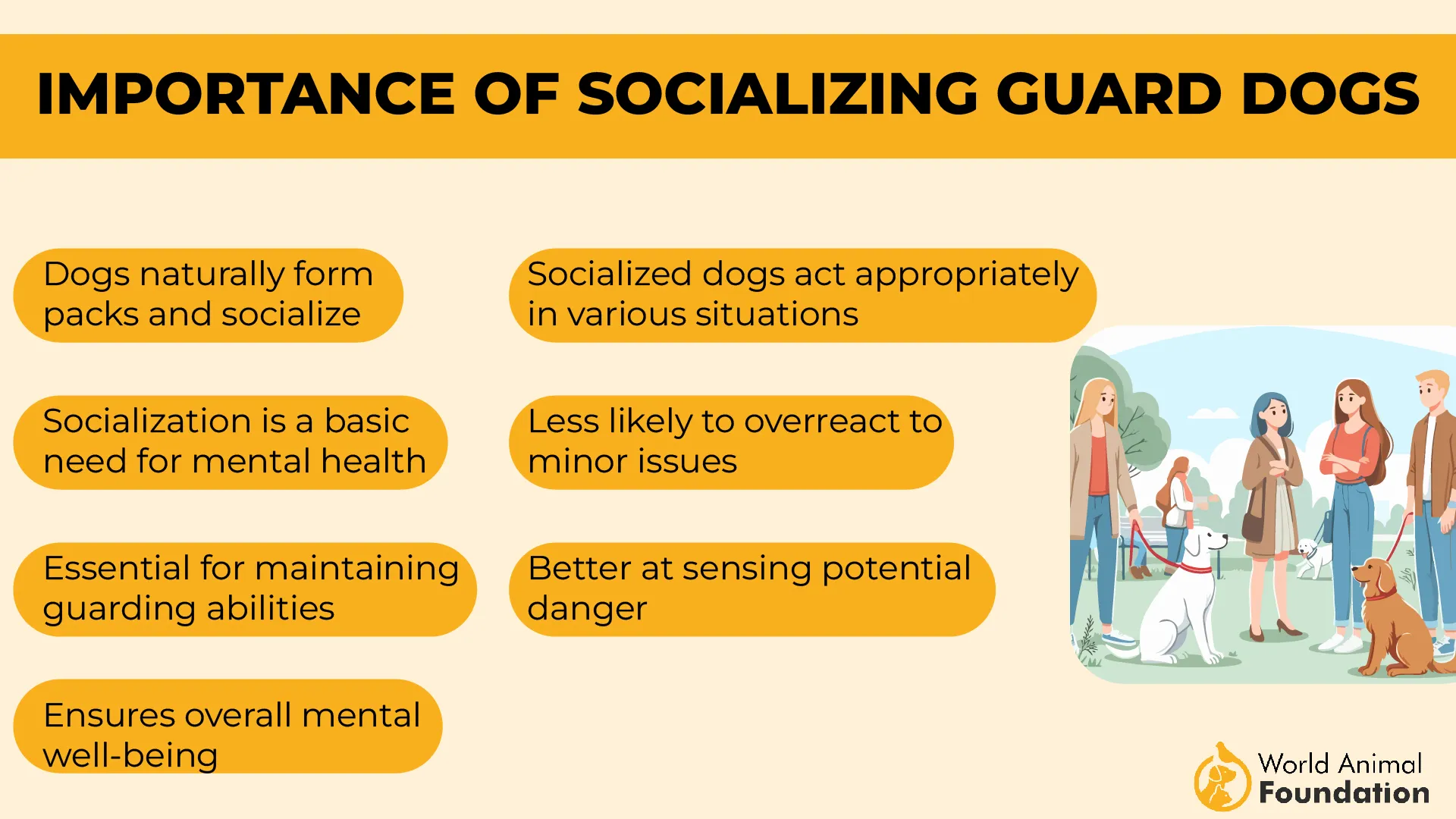
As high-energy dogs, they require daily vigorous exercise—long runs, games, or training sessions—to stay balanced and content.
Fun fact: Until the 1920s, Weimaraners were so rare outside Germany that owning one was considered a mark of high social standing.
6. Belgian Malinois
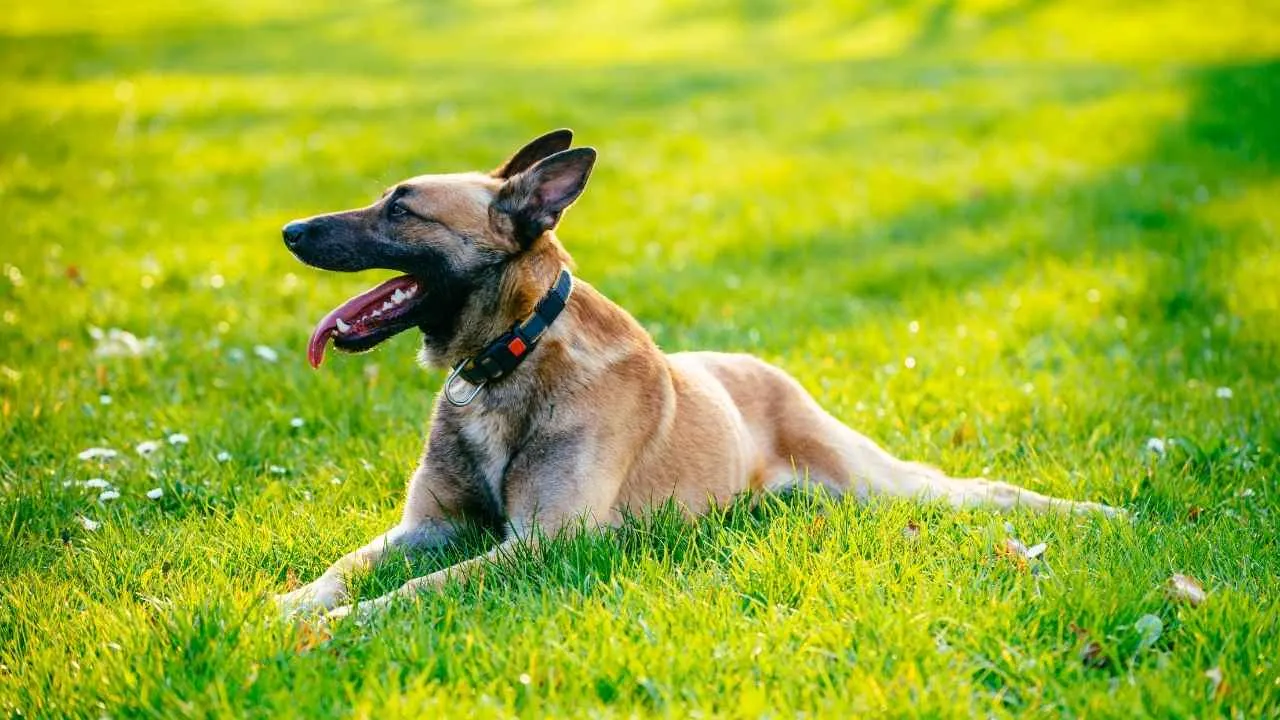
The Belgian Malinois, sometimes referred to simply as the “Mal,” is a highly intelligent and agile herding breed originating from Belgium. Closely related to other Belgian shepherd breeds, it was developed for livestock management but has since gained global recognition as a premier working dog in police, military, and protection roles.
Males typically stand 24–26 inches tall and weigh 60–80 pounds, while females measure 22–24 inches and weigh 40–60 pounds. They possess a short, smooth double coat in shades of fawn, mahogany, red, red sable, or fawn sable, always paired with a distinctive black mask.
Known for their high energy and alertness, Mals have an impressive life expectancy of 14–16 years, thriving in active households where they have both mental and physical challenges.
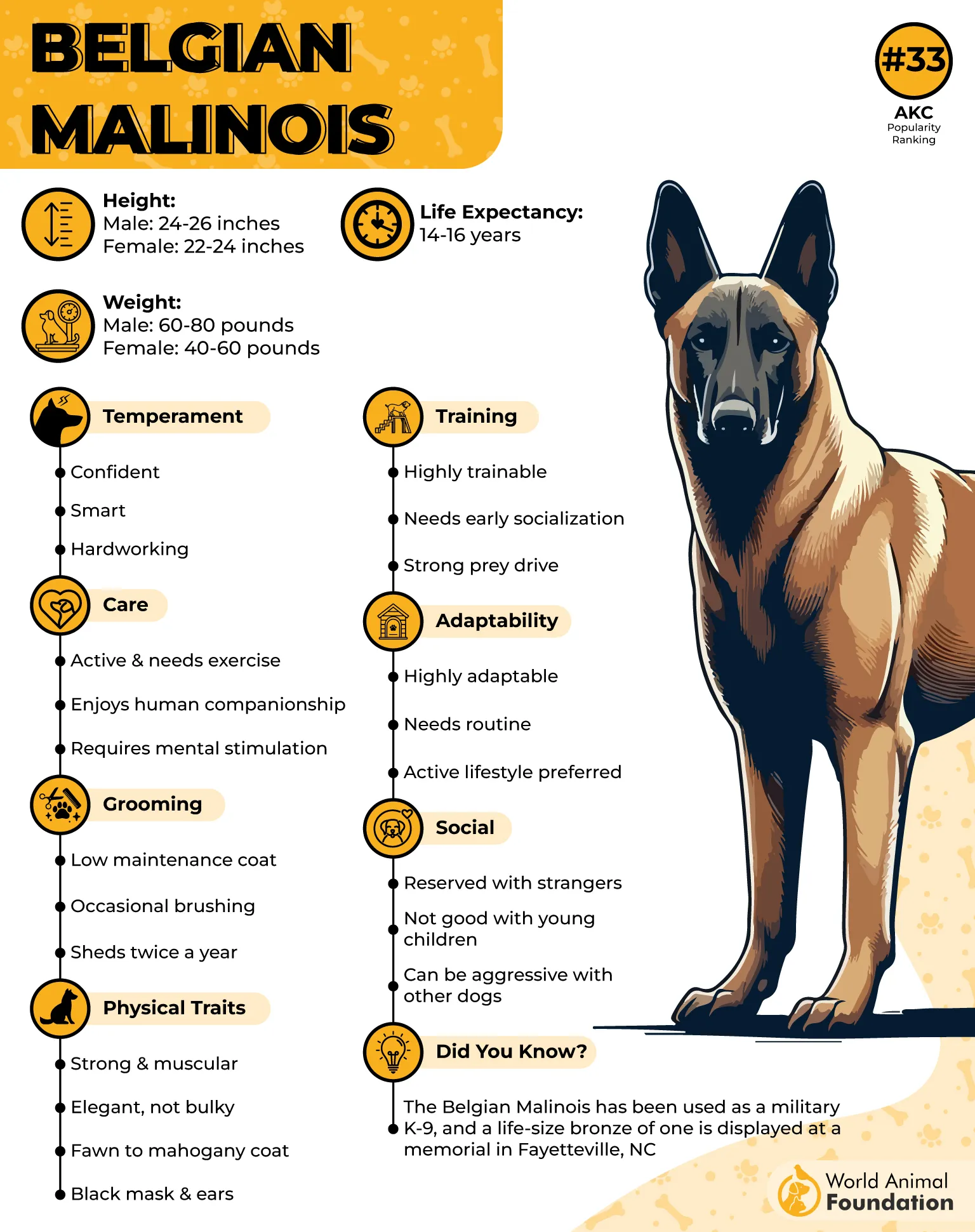
Training
Training a Belgian Malinois requires dedication, consistency, and early socialization. Their intelligence and eagerness to work make them quick learners, but they need structured routines to channel their high drive productively.
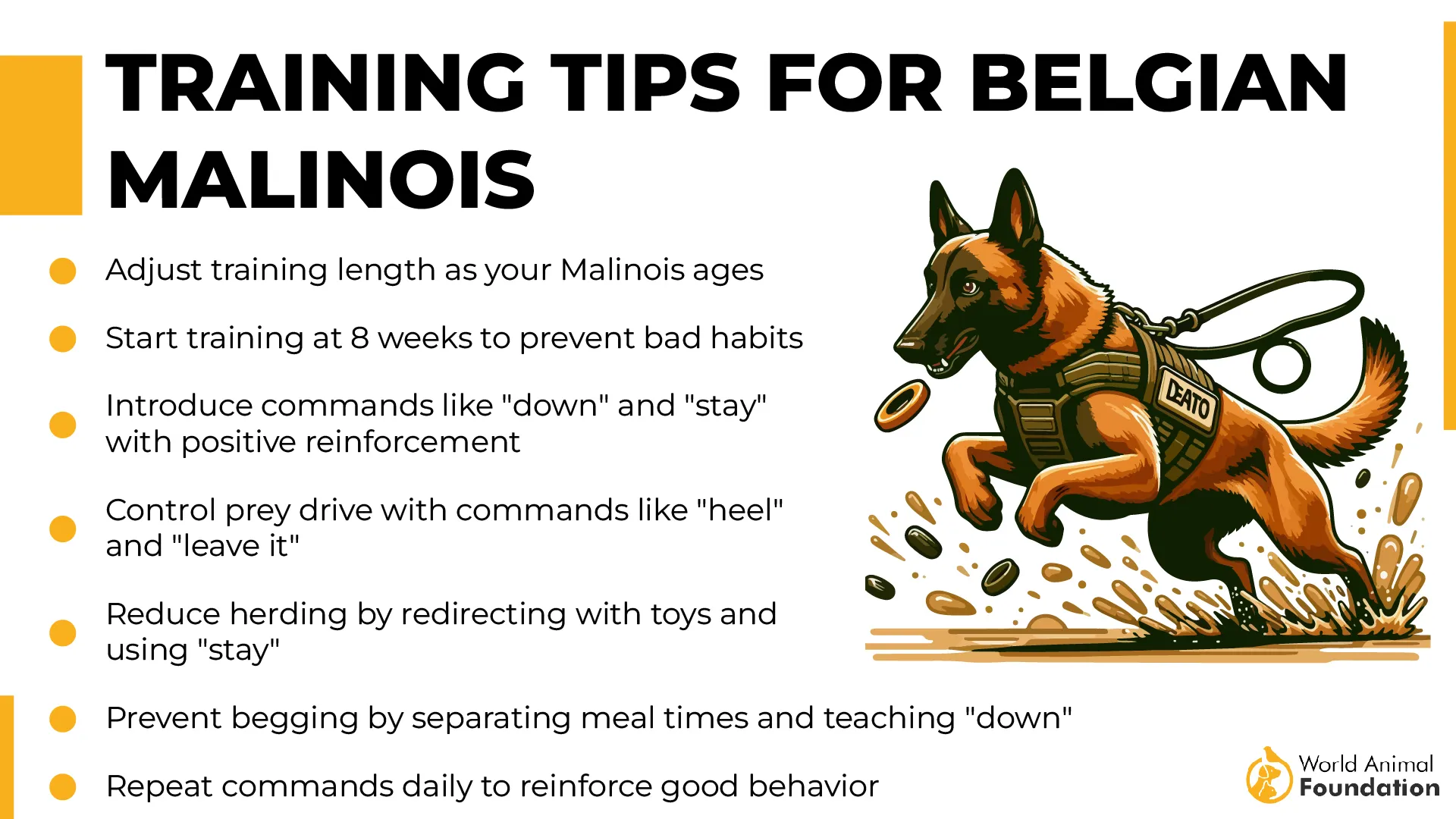
Positive reinforcement methods, coupled with ample exercise, are essential to prevent boredom-induced destructive behavior. These dogs excel in agility, tracking, herding, and protection sports like Schutzhund.
Exposure to varied environments, people, and animals from a young age helps balance their naturally protective instincts with confidence and stability. Professional guidance can be invaluable for honing their guarding skills while maintaining control and responsiveness.
Fact: The Belgian Malinois is so trusted for its focus and stamina that it has been a top choice for elite military K-9 units around the world.
7. German Shepherd
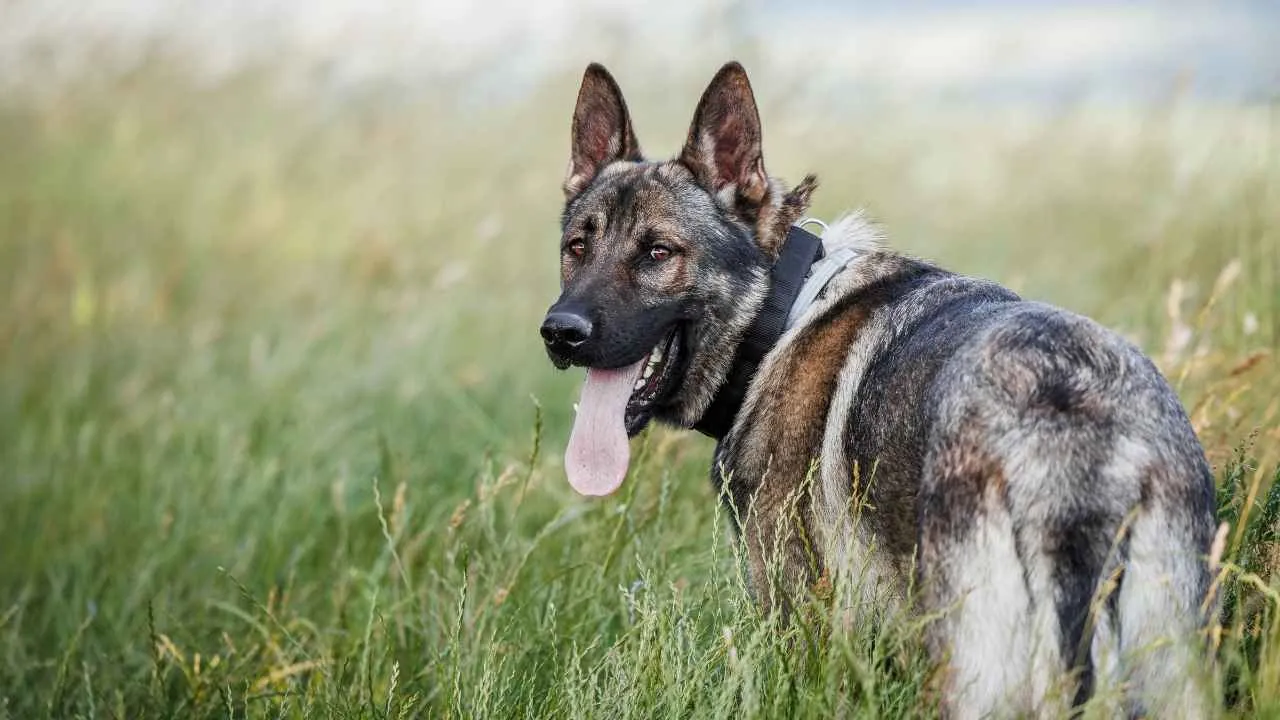
The German Shepherd, also known as the GSD, is a versatile working breed renowned for its intelligence, loyalty, and courage. This is one of the smartest breeds.
Originating in Germany in the late 1800s, it was developed by Max von Stephanitz to be the ideal herding dog and has since become a trusted police, military, and service animal worldwide.
Belonging to the Herding Group, these athletic dogs stand 22 to 26 inches tall, weigh between 60 and 100 pounds, and typically live 7 to 10 years.
They have a coarse, medium-length double coat that comes in various colors, including black and tan, sable, and solid black, and are characterized by their erect ears and confident stance.

Training
These family pets thrive when given structure, purpose, and proper obedience training. Socialization from puppyhood is essential to prevent anxiety or over-guarding tendencies. They are one of the best guard dogs. They respond best to positive reinforcement and are quick learners, excelling in obedience, protection sports, and specialized work.
Because of their high energy, they require both physical exercise—such as long walks or fetch—and mental challenges like scent work or advanced commands.
Teaching reliable cues such as “stay” and “leave it” helps balance their protective instincts with control, ensuring they remain calm under pressure. Families should commit to proper training to keep them engaged and well-mannered.
Fun Fact: The German Shepherd skyrocketed in popularity in the early 20th century after the film stardom of Rin Tin Tin, a rescued GSD who became one of Hollywood’s biggest canine icons.
Conclusion
Choosing the right guard dog for your home is about more than just protection — it’s about finding a loyal companion that thrives in a loving family member role while remaining a reliable, protective dog.
From the sharp instincts of a Doberman Pinscher to the gentle watchfulness of a Bernese Mountain Dog, great guard dog breeds come in many shapes and temperaments. Some, like these, balance affection with vigilance, making them the best dogs for both security and companionship in a family environment.
Whether you’re drawn to a powerful working dog or a more reserved furry breed, considering a puppy alongside the lifestyle and needs of your household is essential. Learning about a dog’s parents can give valuable insight into temperament, especially with naturally protective breeds.
While some may be energetic and agile, others—such as clumsy dogs like the Bernese Mountain Dog—offer a calmer presence. With the right match, your guard dog becomes both a steadfast protector and a cherished part of the family.


